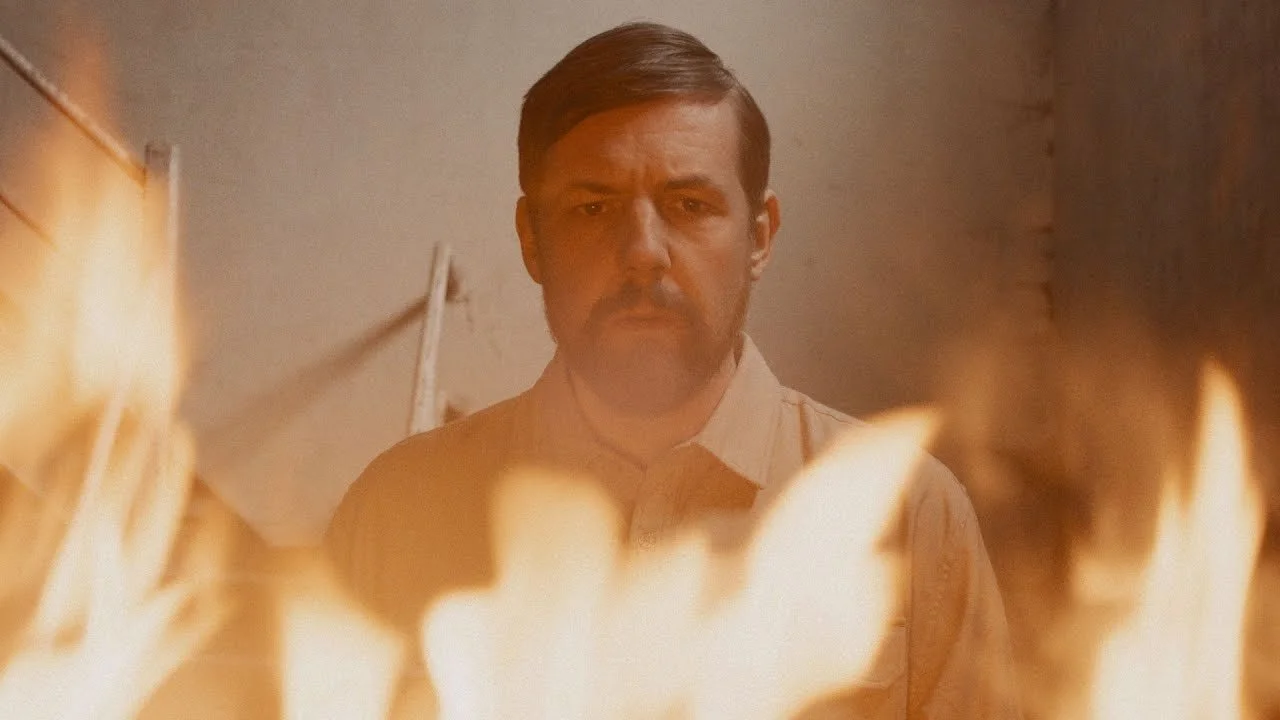'Edgar Allan Poe's The Oval Portrait' Review: A Worthy Throwback to a Bygone Age
Adrian Langley has spent more than twenty years establishing himself as a prolific indie filmmaker. His work, usually filmed in or around his native Ottawa, often oscillates between crime (such as Crook) and horror (such as the Butchers series). This latest film in his oeuvre is a blend of those two genres, as well as a departure from his more explicit fare. Gritty violence is traded in for the supernatural and existential dread, as perfected by renowned writer Edgar Allan Poe.
Based on Poe’s short story of the same name, The Oval Portrait revolves around a mysterious painting which stands in an antique shop. It is a beautiful portrait, and it is coveted by a wealthy man called Grayson (Simon Phillips). He hires a hapless criminal (Paul Thomas) to acquire this beautiful painting by any means necessary. As we see in the film’s prologue, things do not go according to plan. For one thing, the shop is creepy, even for an antique shop. Moreoever, the shop’s owner, Ambrose Whitlock (Michael Swatton), lives just above the shop. Mr. Whitlock is tall, brooding, and almost as archaic as the merchandise he sells. His elegant and debonair demeanour almost makes up for the eerie atmosphere in his premises. And as it becomes clear early on, there’s something else about that shop which is decidedly unfriendly towards trespassers.
Meanwhile, there is an aspiring artist called Ava (Pragya Shail). She is an old soul, to the point that she refuses to own a cell phone and computer. Her passion for painting is only matched by her misery at how the world seems to be moving away from the art which has always captured humanity’s hearts and minds. Moreover, it’s quickly revealed that life is hard on her; in her first scene, she is dumped by her boyfriend (Colby Frost) in the library, even as he pays more attention to a stream of loud texts on his phone. Eventually, she is drawn to the antique shop and its dour owner. Her curiosity leads her to research both, and pay the place a personal visit. It is there that she bonds with Whitlock over their shared love of art and sense of isolation in modern times.
As the film’s writer, director, cinematographer, and editor, Langley has clearly done all he can to evoke the Gothic atmosphere which defines so many of Poe’s work (one might also be reminded of Jerome K. Jerome’s The Man of Science or Edith Nesbit’s short story John Charrington’s Wedding). The Oval Portrait is not only a throwback to this literary genre, but also to that style of Gothic horror which defined British film company Hammer Film Productions. This is achieved in great part by the film’s composer, Andrew Morgan Smith. For his third collaboration with Langley, Smith has arranged and produced an incredibly lush and timeless soundtrack. The orchestral music enhances and elevates the film, and it’s clear that Langley understands that. Many scenes go by without a spoken word, allowing the music to build suspense whilst the characters act and react in subdued silence.
Unfortunately, the film does not always live up to the standard it sets. Swatton is unquestionably the highlight among the actors, and it is he who is given the chance to directly quote Poe’s prose in a haunting monologue. By contrast, Shail does her best, but her performance is too stilted and uncertain, though these shortcomings are not as much her own as they are with her lines. Speaking of, her break-up scene falls especially flat, not just because of Frost’s clumsy performance, but also because of how the character is written. Instead of a human being, he comes off as a walking stereotype of obnoxiousness. As a result, the scene leaves us less sorry for poor Ava in her plight, and more baffled over how these two were ever a couple in the first place. Phillips is similarly let down by the writing, though his reasons for wanting the portrait are genuinely interesting, revealed gradually as the film goes on. Thomas is well cast as the weaselly criminal who quickly comes to regret his involvement with Grayson. Moreover, the story will raise both questions and eyebrows at times, and like with so many of Poe’s work, it will require suspension of disbelief.
Despite its flaws, The Oval Portrait can be counted as a successful adaptation. The original short story is a haunting tale of art, and what it may cost those who pursue it single-mindedly. Langley shows his understanding of the source material, and expands the content to feature-length. By bringing the story into the modern day, he is also able to contrast the original message with a nostalgic longing for the past, in a present where art is increasingly being cheapened by AI and apathy of the general public. And really, the film can also be counted as a successful evocation of the Hammer horror style, warts and all. If nothing else, this is a film which Peter Cushing or Christopher Lee would have happily signed on for if it had been made sixty years ago.


